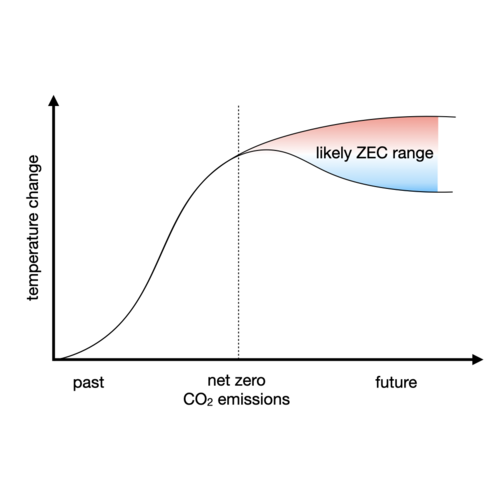Zero Emissions Commitment
What are the key processes in the Earth system that determine its response to halting CO2 emissions? The zero emissions commitment (ZEC) describes the committed temperature change after anthropogenic emissions cease. It is an intrinsic feature of the Earth’s climate system due to slow and fast equilibration processes and has been shown to depend on the cumulative amount of CO2 emitted prior to zero (carbon emissions budget) and the state of the Earth system at the point of zero emissions. This state dependency can be described as the balance between the biogeochemical and thermal equilibration processes of the Earth system. There remains substantial uncertainty and disagreement about the sign and size of temperature change after a cessation of CO2 emissions between different models. The inter-model range of ZEC 50 years after emissions cease (ZEC50) for a scenario with a cumulative carbon budget of 1000 PgC was found to be -0.36oC to 0.29oC with a model ensemble mean of -0.06oC. This magnitude of uncertainty implies that ZEC may be the largest contributor to the uncertainty on the remaining emissions budget for 1.5oC. If ZEC were positive, it could reduce the budget by over a third and imply that net-negative emissions might be needed for temperature stabilisation. However, if ZEC were negative, that might even mean that sustained CO2 emissions could be allowable for a temperature stabilisation goal. We are evaluating uncertainties and process understanding of net-zero climate states in relation to the carbon cycle and climate dynamics.
Project: FOOTPRINTS
Contributors: David Hohn, Tabea Rahm



